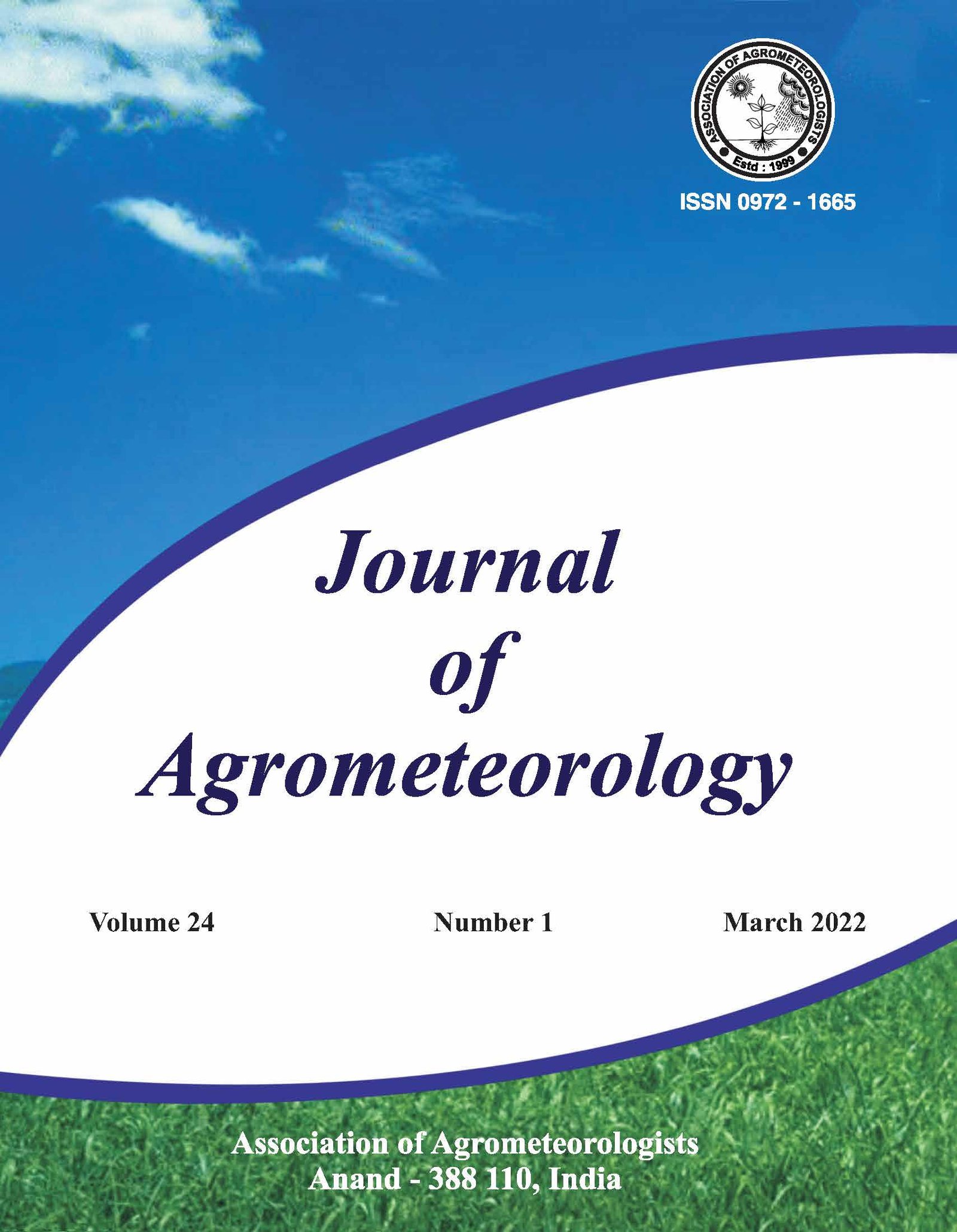Extreme learning machines for weather-based modelling of silk cocoon production
DOI:
https://doi.org/10.54386/jam.v24i1.946Keywords:
BP-ANN, cocoon production, ELM, principal component regression, weather-based modelling, silkAbstract
In spite of the immense popularity and sheer power of the neural network models, their application in sericulture is still very much limited. With this backdrop, this study evaluates the suitability of neural network models in comparison with the linear regression models in predicting silk cocoon production of the selected six districts (Kolar, Chikballapur, Ramanagara, Chamarajanagar, Mandya and Mysuru) of Karnataka by utilising weather variables for ten consecutive years (2009-2018). As the weather variables are found to be correlated, principal components are obtained and fed into the linear (principal component regression) and non-linear models (back propagation-artificial neural network and extreme learning machine) as inputs. Outcomes emanated from this experiment have revealed the clear advantages of employing extreme learning machines (ELMs) for weather-based modelling of silk cocoon production. Application of ELM would be particularly useful, when the relation between production and its attributing characters is complex and non-linear.
Downloads
Published
How to Cite
Issue
Section
License
Copyright (c) 2022 PRAMIT PANDIT, BISHVAJIT BAKSHI , SHILPA M.

This work is licensed under a Creative Commons Attribution 4.0 International License.
This is a human-readable summary of (and not a substitute for) the license. Disclaimer.
You are free to:
Share — copy and redistribute the material in any medium or format
Adapt — remix, transform, and build upon the material
The licensor cannot revoke these freedoms as long as you follow the license terms.
Under the following terms:
Attribution — You must give appropriate credit, provide a link to the license, and indicate if changes were made. You may do so in any reasonable manner, but not in any way that suggests the licensor endorses you or your use.
NonCommercial — You may not use the material for commercial purposes.
ShareAlike — If you remix, transform, or build upon the material, you must distribute your contributions under the same license as the original.
No additional restrictions — You may not apply legal terms or technological measures that legally restrict others from doing anything the license permits.
Notices:
You do not have to comply with the license for elements of the material in the public domain or where your use is permitted by an applicable exception or limitation.
No warranties are given. The license may not give you all of the permissions necessary for your intended use. For example, other rights such as publicity, privacy, or moral rights may limit how you use the material.





